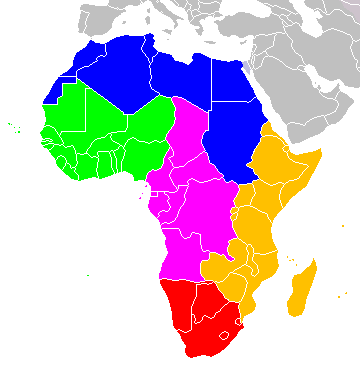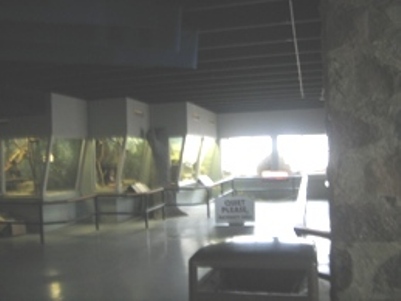
Meerkats are
located in dry plains and semi-deserts
of southern Africa.
Meerkats avoid forested areas and
prefer open grounds.
Meerkats like the open sandy grounds
because in the thick vegetation areas
predators can hide.
So the open area provides a visible area
helping them watch for their predators
by using their great vision.
See how well meerkats
adapt
to their environment.
Extremes heat temperatures pose little
problem for the meerkats.
Meerkats are known to bask in the
sun to stay alert.
Meerkats usually live in grass-lined
burrows dug by other animals such as
African ground squirrels.
Also, meerkats share their burrow
with the ground squirrel and the yellow
mongoose. These
burrows may be up to ten feet (three
meters) long. Some
meerkats can even live in rock crevices.
Meerkats inhabit portions of South Africa,
Botswana,
Zimbabwe and Mozambique,
extending from the south west to the
eastward savanna and grassland areas.
Meerkat distribution depends on
soil type, with firm and hard soils
being common living grounds.
Meerkats terrestrial biome is
desert or dune. In the southern portion
of their habitat, fur color is darker,
with lighter fur coloration in the more
arid (dry) regions.
Because of the seasons the meerkats’
behavior does change when looking for
food. In the wet
summer months the meerkat searches for
food very early in the morning.
Then in the afternoon since the
temperature is raising the meerkats will
search for food in the shady areas.
Promptly after this most meerkats
will take an afternoon nap in their
burrows. In the dry
winter however they wait till it warms
up to search for food.
This means that they don’t take
an afternoon nap like in the summer.
Food isn’t as available as it is
in the summer months, so this makes the
hunting part more difficult.
The red area is the main
distribution of meerkats in Africa.
 *
This is a picture in the Small Mammals Building where the Sashie
the meerkat resides. To read about Sashie click
Meerkats!
*
This is a picture in the Small Mammals Building where the Sashie
the meerkat resides. To read about Sashie click
Meerkats!
 Habitat (Where do I Live?)
Habitat (Where do I Live?)
 *
This is a picture in the Small Mammals Building where the Sashie
the meerkat resides. To read about Sashie click
Meerkats!
*
This is a picture in the Small Mammals Building where the Sashie
the meerkat resides. To read about Sashie click
Meerkats!